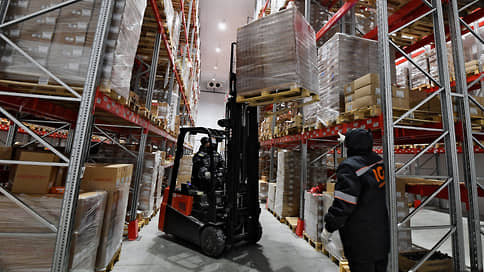There is a shortage of warehouses in neighboring countries due to parallel imports of goods to Russia
[ad_1]

The development of parallel imports and new supply routes has led to a shortage of warehouse space in post-Soviet countries, and potential demand exceeded 1 million sq. m. m. This allowed property owners to raise rental rates by 25–30%, but investors are in no hurry to launch new spaces due to doubts about maintaining current routes. Türkiye, to which part of the flow from Kazakhstan was redistributed, inspires more confidence in the market.
Potential demand for warehouses in the near abroad, mainly from Russian companies, until 2025 is estimated at at least 1.1 million sq. m. m, calculated by NF Group. Analysts analyzed the markets of Belarus, Kazakhstan, Tajikistan, Uzbekistan, Azerbaijan, Armenia and Georgia, noting a lack of space. Since 2022, companies from the Russian Federation have occupied 250 thousand square meters in post-Soviet markets. m of warehouse space, says Ekaterina Nogai, head of the research and analytics department at IBC Real Estate. “The potential is largely limited by scarce supply,” she notes.
According to NF Group, in Georgia (warehouse market volume – 74 thousand sq. m), Armenia (72 thousand sq. m), Kyrgyzstan (46 thousand sq. m) and Tajikistan (10 thousand sq. m) there are no warehouses. In Belarus (1.6 million sq. m.) 0.3% is empty, in Kazakhstan (1.3 million sq. m.) – no more than 1%, in Uzbekistan (208 thousand sq. m.) – 5.2%, in Azerbaijan (400 thousand sq. m) – 5.8%.
Russian business began to take an active interest in warehouses in the Transcaucasus and Central Asia in the context of tightening Western sanctions. Consultants recorded the first surge in demand a year ago (see “Kommersant” dated October 18, 2022). The president of the customs broker KVT Service, Yulia Shlenskaya, says that the routes are used mainly for parallel import of electronics, spare parts, etc. According to her, Chinese cars often pass through Kyrgyzstan. An additional factor was the development of Russian marketplaces in these markets. Regional director of the Nikoliers warehouse and industrial real estate department, Viktor Afanasenko, adds that demand was also generated by international manufacturers who decided to “move” from Russia.
According to the general director of Infoline-Analytics, Mikhail Burmistrov, in the context of a shortage of warehouses, Russian companies can either participate in their construction according to the built-to-suit scheme, or redistribute part of the volumes to other areas. Part of the flow from Kazakhstan has already been transferred to Turkey and the UAE, and the supply channel through China is growing, he notes. Ms. Shlenskaya also calls Dubai and Turkey in demand. In Turkey, according to her, there is no shortage of warehouse space, although there are few available facilities.
Demand allows owners to raise rates. According to Ms. Nogai, in many post-Soviet countries, since the beginning of the year, the cost of renting warehouses has increased by 25–30%. In Central Asia, renting class A properties costs an average of $120–140 per sq. m. m per year, in Belarus – $78, in Azerbaijan – $60, according to NF Group. In the Moscow region, based on the results of the third quarter, renting warehouses, according to Ricci, cost an average of 7.5 thousand rubles. ($93) per sq. m per year. According to Commonwealth Partnership partner Yulia Tokareva, rates are rising not only due to a shortage of supply, but also due to rising construction costs.
The introduction of new warehouses in post-Soviet markets remains restrained. NF Group partner Konstantin Fomichenko says that by the end of the year, 161 thousand square meters have been announced. m, and most projects for a later date are still in the planning stage. Russian developers are not enthusiastic about some post-Soviet countries. General Director of Orientir Andrei Postnikov attributes this to the favorable conditions of the domestic market. According to Ricci, 0.4% of warehouses in Moscow and the region are empty; many regions are characterized by growing demand (see “Kommersant” dated September 19). To enter a new location, you also need to believe in the liquidity of the local market, infrastructure development, and availability of materials, points out Mr. Postnikov.
Viktor Afanasenko connects the risks of new markets with high inflation and the key rate, as well as the specific purchasing patterns of the population. Executive Director of Transasia Logistics Kirill Latinsky says that in order to develop logistics capacities, investors need confidence that the supply corridor will remain intact. Regarding, for example, Kazakhstan, the market, according to him, does not have such an understanding in the light of ambiguous statements by the country’s authorities, and Turkey today seems to be a more reliable option.
[ad_2]
Source link





